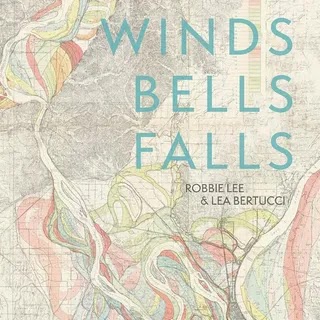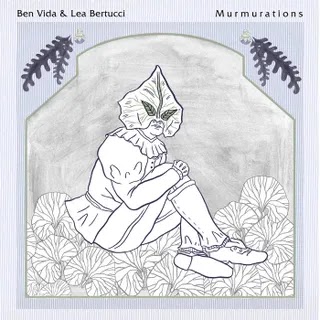On two collaborations—one for tape loops and acoustic instruments, the other for woodwinds and electronics—the New York composer and improviser brings an inquisitive, playful approach to experimental music.
Lea Bertucci’s music seems to obey laws of physics that only apply at the quantum level. It can give the impression that the listener is hearing the music from multiple directions at once, or that each iteration of a given tone exists in alternate timelines. Sounds unfold in one direction and suddenly shift into reverse. The New York composer and improviser has mastered a technique of manipulating tape loops that creates disorienting sensations of absolute groundlessness, and she bases much of her other work in beds of harmonically rich drones. One moment can extend into what seems like infinity, or be looped again and again in overlapping, arrhythmic coils.
Bertucci recently released two collaborative albums that stand in stark contrast with each other, but both revel in this uniquely playful, if sometimes unsettling, style of surrealism. Winds Bells Falls, which she made with multi-instrumentalist and frequent Mary Halvorson collaborator Robbie Lee, focuses exclusively on her live tape-looping practice. Bertucci records and contorts Lee’s improvisations on celeste, chimes, baroque flute, and contrabass recorder in real time, while Lee responds to the sound of his own playing swirling and dissolving in front of his ears. Bertucci’s method for looping and manipulating tape is physical and expressive, her fingers guiding the wheels of a reel-to-reel machine slower and faster, sometimes jerking them to produce slippery spasms that ruminate and decay. She first explored these techniques in an improvised setting with vocalist Amirtha Kidambi, but while that duo’s work is brooding and turbulent, Winds Bells Falls is often bright and gleaming, like light glinting in a funhouse mirror.
Lee’s broad choice of instruments means the album never sits still for long, but each individual piece is based around very specific tones and timbres: the round, full bodied resonance of the celeste (a keyboard instrument that strikes metal bars or bells rather than strings), the breathy toots of the gershon (a 15th century European instrument made out of animal horns), the metallic ring of feet-tall orchestral chimes. Much of the music is simple and spacious, despite the layers of tape-manipulated echoes that murmur and sputter with varying levels of opacity. On “Bags, Boxes, Bubbles,” layers of electronic hiss seep up under Lee’s dissonant celeste chords, but the overall mood is languid, almost serene. Looped clacks of fingers on recorder keys pile on top of pained, moaning tones on “Azimuth” before morphing into elephant-like wails and petering out. When Winds Bells Falls starts to approach chaos, it quickly peaks before settling back into an eerie, pacified quiet.
A similar ghostly intensity permeates Murmurations, Betucci’s first collaboration with veteran electronic musician Ben Vida. In a reversal of roles, samples of Bertucci playing wind instruments become source material for Vida’s modular synthesizer as they are stretched and compressed until rendered barely recognizable. Murmurations is much more solemn and poised than Winds Bells Falls, the continuous interplay and spontaneity replaced by a singular vision of grandeur and foreboding. Deep swells of bass drone, synthesized by Vida, often overwhelm the mix, pushing Bertucci’s flute and saxophone to the margins as they seem to echo in the distance. The duo constantly plays with spatial perception in this way, with certain instrumental or vocal textures close enough to the listener’s ear to resemble ASMR—a technique Bertucci refers to as over-amplification—while others reverberate in some far-away digital environment.
In the final seconds of “The Vast Interiority,” a short piece that consists of warped, half-uttered phrases by both Bertucci and Vida, the pair start to crack up. It highlights a paradox at the heart of Murmurations: The music may be easily read as stoic, but at its heart is a dynamic and persistent playfulness. It is the sound of two musicians on intersecting and exploratory paths, each pushing the other into previously unconsidered territories and endlessly curious about where to go next. The tension between the uneasy sounds and the playful attitude with which they were conceived offers an opportunity to question why these tones and frequencies are often considered imposing. In that inquiry lies the magic of Bertucci’s music—it allows for the emancipation of “difficult” music into the realm of fun.




0 comments:
Post a Comment